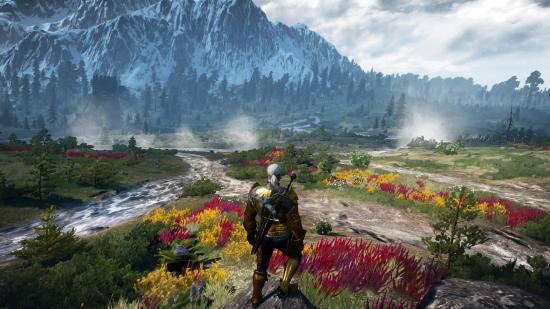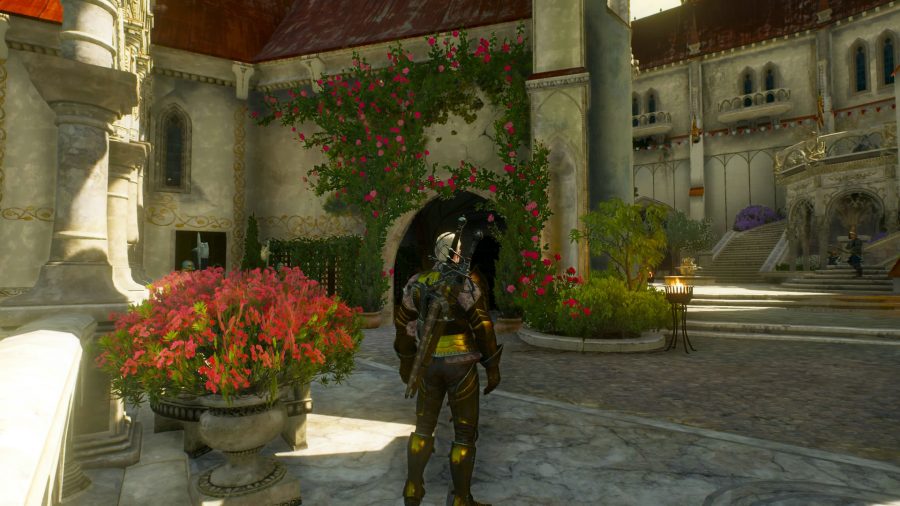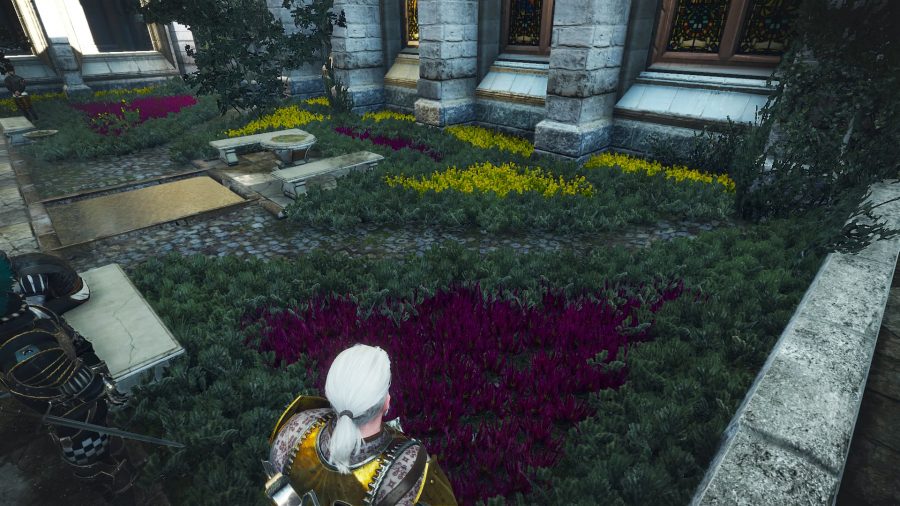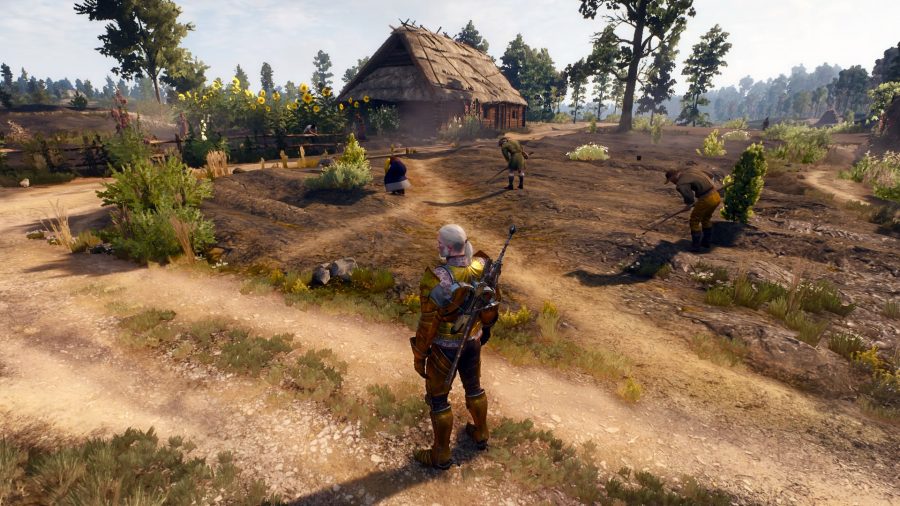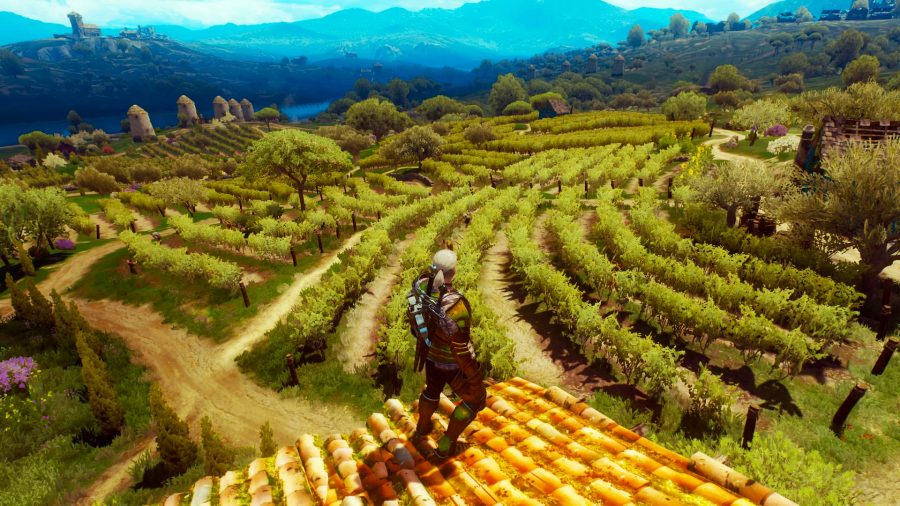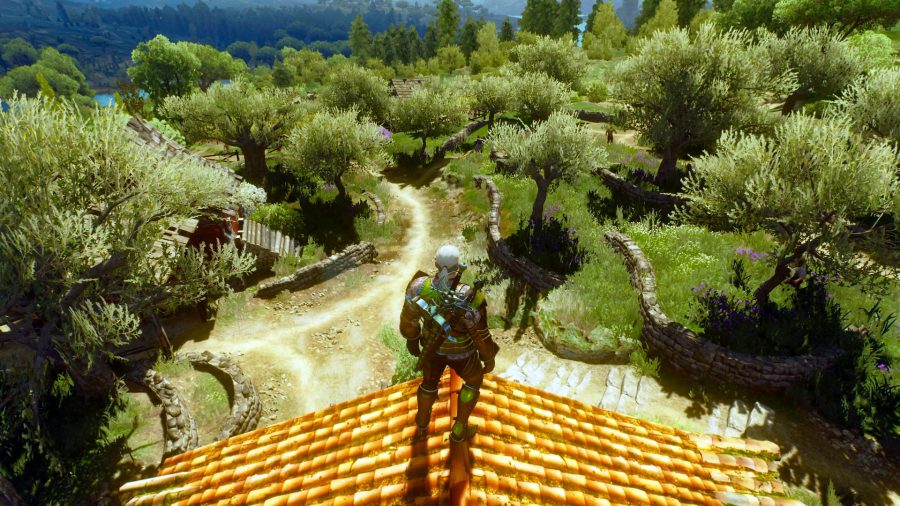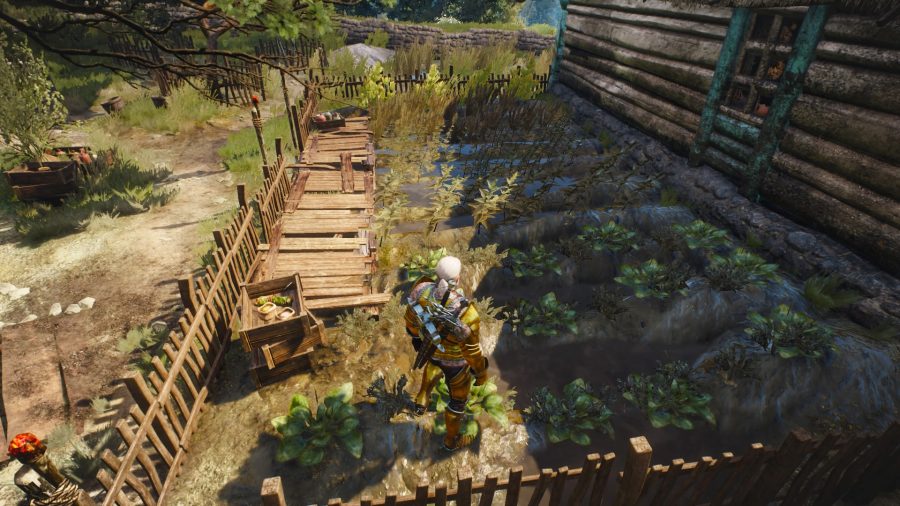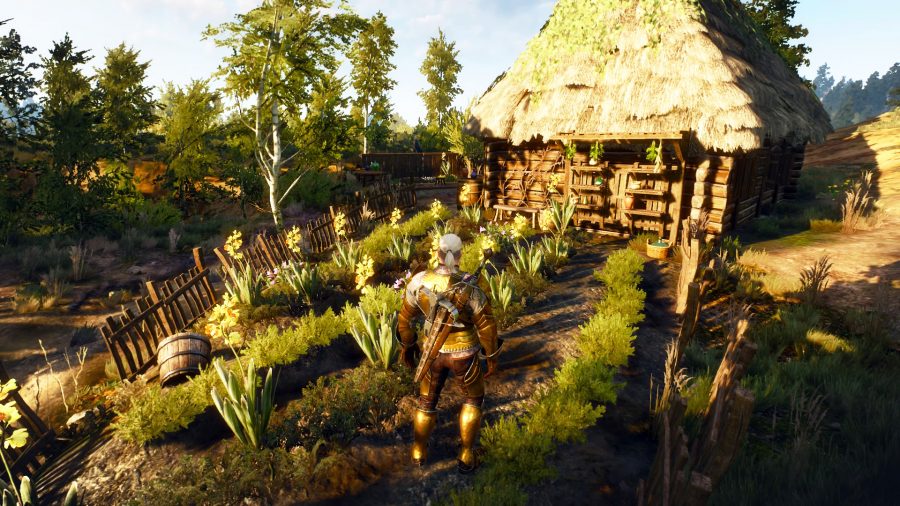CD Projekt Red is one of the best in the business at portraying landscapes in games. If you want proof you only have to look at The Witcher 3: Wild Hunt and its big-picture representation of natural and designed locations. But what is much more difficult to execute is the deployment and representation of horticulture in the game, both at small and large scales, that underpins and ties the game’s world together.
The use and representation of horticulture through aesthetics, actions, and people, makes The Witcher 3’s environments among the most complete in videogames. Attention to detail right down to the subtle placement and angling of a flower take them beyond everything else.
Its diverse and faithfully recreated array of typologies, crammed full of topological, geological, and geographical characteristics, would not be as accurate or as impactful without the attention paid to those smaller-scale elements: the plants, the trees, the gardens. The game gets the necessary ‘realistic representation’ right, but also the horticultural accuracy, too.
This is a rather specific art as certain plants grow in certain ways, requiring particular conditions to thrive – it is here that The Witcher 3 really nails it.
Its plants look naturalistic but considered: ferns with droopy fronds grow in shaded areas; ivies cling to walls and clamber up columns, dressing buildings, directly contributing to their architectural character; sunflowers grow tall and wave in the wind; and even manicured garden plants in the Nilfgaardian and Beauclair palaces create patterns and focal points. They are not only aesthetically pleasing, they are also authentic.
Such horticultural accuracy is important to any depiction of landscape: get it wrong and they will look strange and jarring, but get it right and the landscapes are more convincing. This improves our experience of virtual landscapes, gardens, and plants, sure, but it also shines a light on the pleasing union of real and fantasy worlds, and of horticulture and videogames.
In Geralt’s travels we see people actually doing horticulture, often in the form of productive landscapes and agriculture, particularly on a human scale. Villagers work the fields, tilling and preparing soil, wheat- or barley-like crops grow neatly in marked fields, and people tend to the blooming orchards, ensuring their health and harvest.
These aspects of active horticulture bring the landscapes to life, not just through making background NPCs believable through their labour routines, but by making the land – and their ongoing relationship with it – a critical part of existence, and the character of the setting.
The concept of active horticulture extends throughout the game’s landscapes but is particularly present in Toussaint. It is wine country – vineyards abound. There is something immensely pleasing about vineyards and the way they shape a landscape: their satisfying layout in uninterrupted lines, sweeping over land; the plant’s narrow and upright form; and the workers weaving through them, disappearing and reappearing as if by magic.
Green shoots: PCGamesN’s best long reads
Combine this with a reliance on horticulture to ensure function and productivity, and the vineyards of Toussaint demonstrate its importance to the place and its people beautifully.
A slightly more informal, natural-looking example in Toussaint are the olive groves, which successfully demonstrate a blurring of the boundary between productive and ornamental horticulture. Their old, gnarly trunks, each one unique, offset by plumes of delicate silver-green leaves, faithfully adhere to their form and nature.
Move over Geralt: Why Ciri should be the lead in The Witcher 4
In them we see the beauty and majesty of the plants themselves, while their informal arrangement and wild underplanting offers a contrast to the regimented vineyard corridors. Either way, It is the representation of these places as productive landscapes that underscores the game’s fascination with the natural as affected by human touch.
The olive trees play a big part in Toussaint – they would take centuries to get to their size, so the trees actually intimate the longevity of the place. Along with the vineyards this accentuates horticulture’s importance in the game – in ornament and as active landscape elements they are powerful contributors to place-making.
Fertile ground: The best RPG games on PC
A different yet still intimate connection between people, landscape, and horticulture is represented by herbalists. They grow produce and plants for functional use in specialist gardens that delightfully illustrate two approaches to design in the landscape.
While some people’s dwellings have a few surrounding plants, herbalist’s dwellings often demonstrate deliberate horticultural design: fenced off, delineated, miniaturised fields of plants grown in easily accessible lines, segregated according to species; areas for pruning, cuttings, potting and brewing; and even small planting beds adjacent to the hut filled with groundcover and climbing plants.
This portrayal of specialist horticulture demonstrates that the world’s connection to alchemy and brewing must be supported by expert horticultural understanding, and that even such a niche field has an important place and role to play in bringing the game’s landscapes to life.
Additionally, the spaces that herbalists occupy and the way they are treated by others – either as community healers or as witches to be feared – demonstrates that people with specialist horticultural knowledge are important in the world of The Witcher. The link they provide between people and plants is critical to creating authentic and believable connections between the landscape and its medieval denizens.
At certain points in the game, the herbalists act as a catalyst for bringing together all of these horticultural manifestations through quests. The importance of this is demonstrated by the fact that one such horticultural side-quest happens early in the game – in White Orchard with Tomira – and it is one that is both crucial to the story and pivotal to progress the adventure.
Proper tools: How realistic is Stardew Valley? We asked a farmer
Based around Tomira’s horticulturally-centred hut and garden – both are crammed full of horticulture, from plants to storage areas to practical workbench-like spaces – this quest sees a small flurry of activities happen alongside each other.
There is a need to locate a particular plant in Buckthorn, trade with a specialist herbalist for the first time, and, if you are so inclined, collect ingredients and brew the potion Swallow for the suffering patient inside Tomira’s hut. What results is ingredient gathering in a quest that is horticulturally-centred, relying on plants and horticultural design as quest markers, destinations, and guides.
We see here how plants, people, active horticulture, and knowledge all come together to characterise the world of The Witcher 3. From this early point in the game, we learn how to spot plants, pick them, and brew them into potions, which becomes an essential ritual throughout the rest of the game as we roleplay as a witcher. And through harvesting a villager’s crops, or garnering knowledge from the herbalist experts, we actively participate in a type of virtual horticulture that brings us closer to the population.
Family matters: Why The Witcher doesn’t only derive its power from monster slaying
CD Projekt Red not only used horticulture excellently to inform one of the main mechanics of the game – alchemy – but to augment the virtual landscapes they created, making them look and feel natural. It is here that we see a technique in game design that is shared by garden and horticultural design – starting with something natural looking but then tweaking, designing, and editing to make it more pleasing to the eye.
By recreating virtual landscapes that are expertly informed and laced with horticulture, the environments become, more crucially, navigable – the plants and landscape typologies act as subtle horticultural familiarities and landmarks throughout the virtual environments, to guide us around its vast lands.
